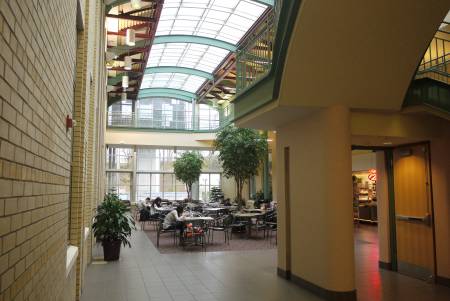Carnegie Mellon University
Relationships in instance segmentation and anomaly detection
Abstract: This thesis primarily covers work on two different tasks in computer vision: (1) anomaly detection and (2) instance segmentation. Anomaly detection is an underexplored unsupervised problem that has existed in many fields. On the other hand, instance (and panoptic) segmentation is a supervised problem that can leverage the powerful data and key developments from [...]
Next-Gen Video Communication
Abstract: Video communication connects our world. It is necessary in conducting business, educational and personal activities across different geographical locations. However, the quality of an average user’s video communication is dramatically worse than that of professionally created videos in news broadcasts, talk shows, and on YouTube. This is because professionally created videos are often captured with [...]
Carnegie Mellon University
Learning with Diverse Forms of Imperfect and Indirect Supervision
Abstract: High capacity Machine Learning (ML) models trained on large, annotated datasets have driven impressive advances in several fields including natural language processing and computer vision, in turn leading to impactful applications of ML in areas such as healthcare, e-commerce, and predictive maintenance. However, obtaining annotated datasets at the scale required for training such models [...]
MRSD Annual Poster Presentation
Four student teams from the MRSD program will use posters, videos, and hardware to show their project work on robots for room disinfection, search & rescue, increasing human capability via a third arm, and increased-efficiency factory-floor obstacle avoidance.
Carnegie Mellon University
3D Representation Learning for Perception and Prediction: A Modular Yet Highly Integrated Approach
Abstract: Modularized and cascaded autonomy stacks (object detection, then tracking and then trajectory prediction) have been widely adopted in many autonomous systems such as self-driving cars due to its interpretability. In this talk, I advocate the use of such a modular approach but improve its accuracy and robustness by developing different 3D representations for each [...]
Carnegie Mellon University
MSR Thesis Talk: Avi Rudich
Title: Kinematic Analysis of 3D Printed Flexible Delta Robots Abstract: Flexible Delta robots show significant promise for use in a wide array of manipulation tasks. They are simple to design and manufacture, and they maintain a high level of repeatability and precision in open loop control. This thesis analyzes the kinematic properties of flexible [...]
Reconstructing common objects to interact with
Abstract: We humans are able to understand 3D shapes of common daily objects and interact with them from a wide range of categories. We understand cups are usually cylinder-like and we can easily predict the shape of one particular cup, both in isolation or even when it is held by a human. We aim to [...]
Activity Understanding of Scripted Performances
Abstract: The PSU Taichi for Smart Health project has been doing a deep-dive into vision-based analysis of 24-form Yang-style Taichi (TaijiQuan). A key property of Taichi, shared by martial arts katas and prearranged form exercises in other sports, is practice of a scripted routine to build both mental and physical competence. The scripted nature of routines [...]
Carnegie Mellon University
Dynamical Model Learning and Inversion for Aggressive Quadrotor Flight
Abstract: Quadrotor applications have seen a surge recently and many tasks require precise and accurate controls. Flying fast is critical in many applications and the limited onboard power source makes completing tasks quickly even more important. Staying on a desired course while traveling at high speeds and high accelerations is difficult due to complex and [...]
Carnegie Mellon University
Person Transfers Between Multiple Service Robots
Abstract: As more service robots are deployed in the world, human-robot interaction will not be limited to one-to-one interactions between users and robots. Instead, users will likely have to interact with multiple robots, simultaneously or sequentially, throughout their day to receive services and complete different tasks. In this thesis, I describe work in which my [...]



